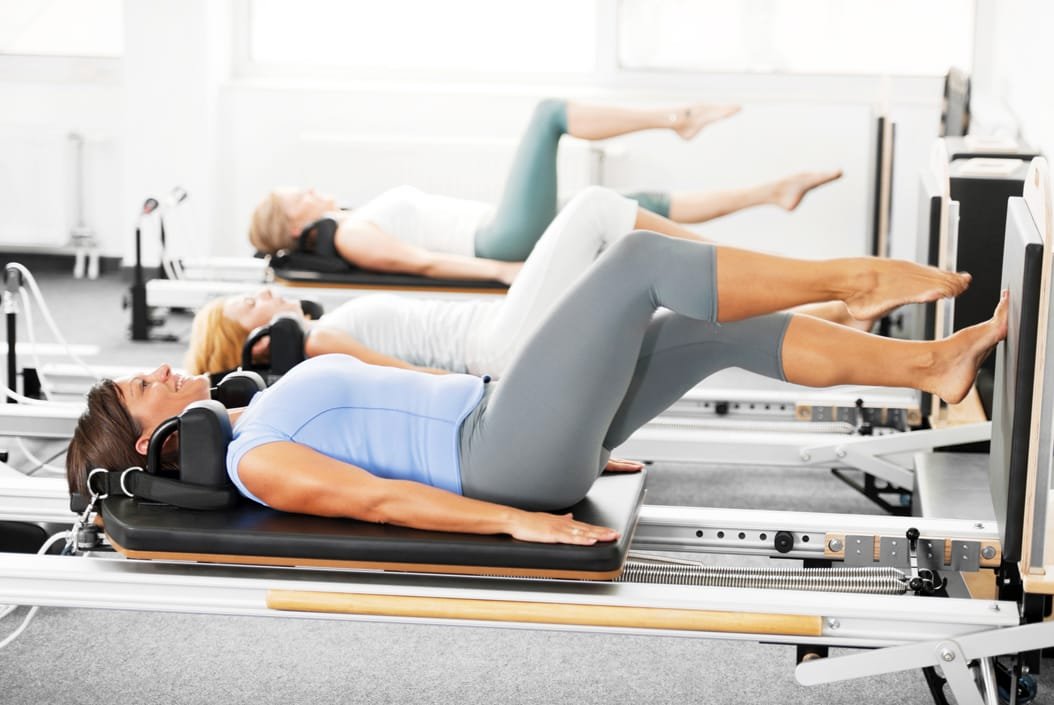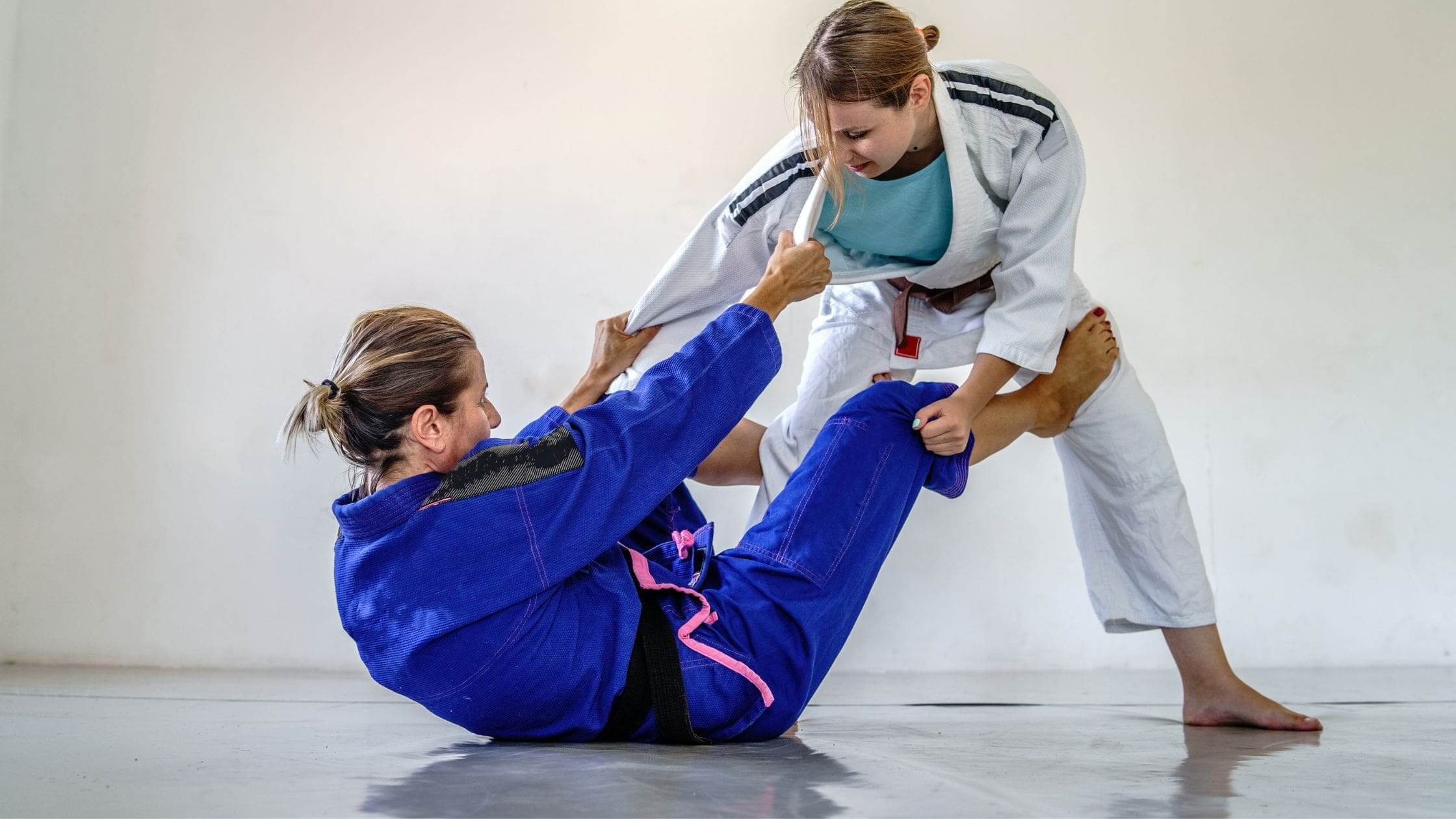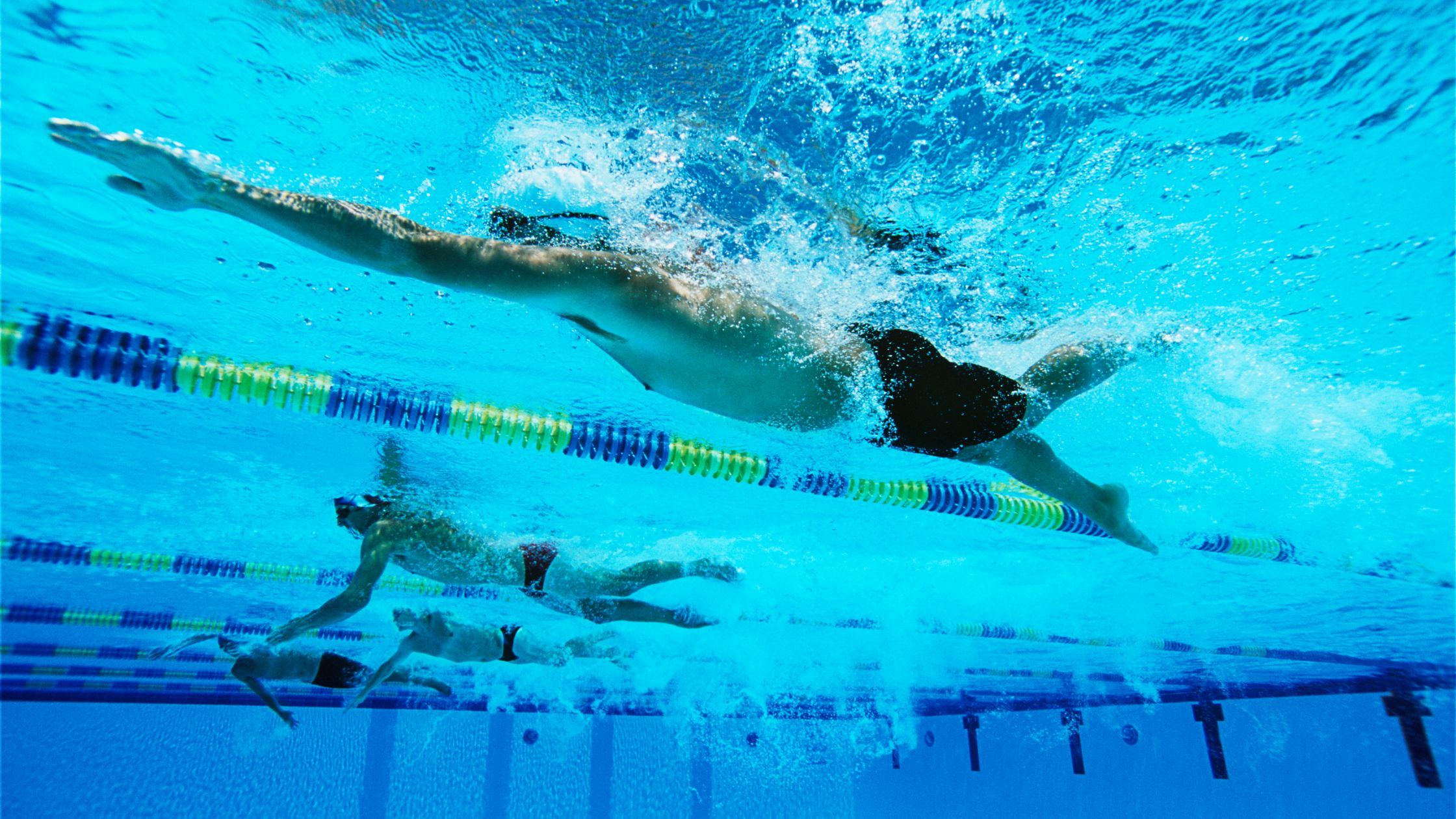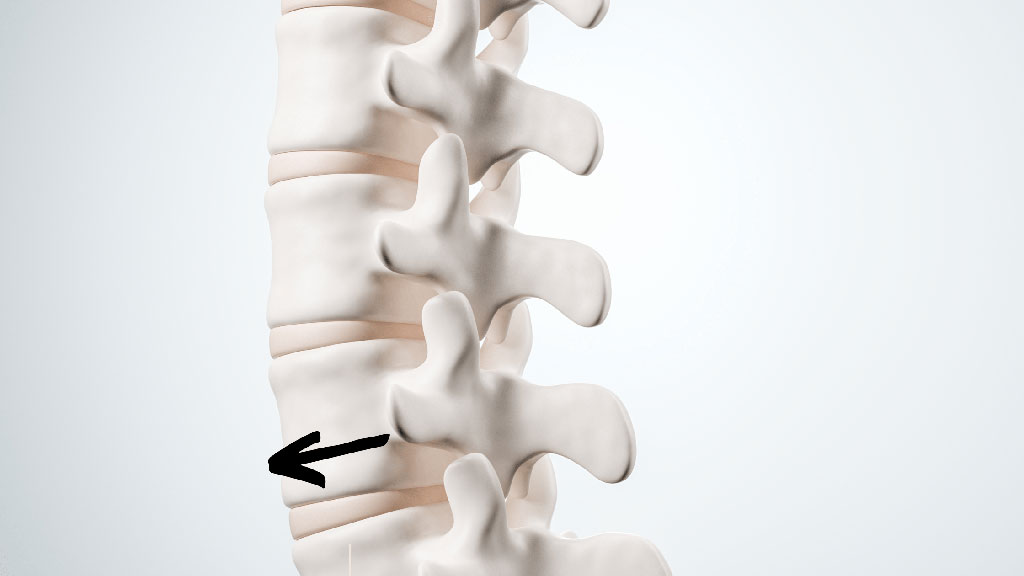“Find your neutral spine” is something you’ll often be instructed to do in a Pilates class. But what exactly your neutral spine is and how to find it isn’t always made clear.
Your neutral spine is when the 3 natural curves of your spine – your cervical (neck), thoracic (middle) and lumbar (lower) curves – are intact. These curves are often compromised by lifestyle and hereditary factors, including muscular imbalances, injuries and repetitive motions. Over time, these factors lead to postural issues. An anterior pelvic tilt (bigger low-back curve and bum sticking out) or a posterior tilt (your bum tucked under) are the possible outcomes.
Solving these postural problems by finding a neutral spinal alignment is vital. Not only so that you can perform Pilates correctly, but doing so also benefits your health. The natural curves protect the spine, allow for optimum breathing and support proper muscle activation.
However, it is important to remember that there isn’t an “ideal” posture. There curves vary from person to person, as does optimal alignment. It can help to keep this in mind when trying to find your own “neutral spine”.
Does a neutral spine mean a straight spine?
Because of these curves that form a natural ‘S’ shape, having a neutral spine doesn’t equal a straight spine. The term ‘’stand up straight’’ doesn’t really make anatomical sense! When we look to create a neutral spine we’re really looking to find our natural spine.
Our first curve is found in the cervical spine, or the neck. The main function of our neck is to support the weight of our head, and of all the sections of the spine, it has the most amount of movement so we can take a look at everything around us.
The second curve is found in the thoracic spine, or the middle back. This area creates the outward curve of our back. Its main function is as an attachment for our ribcage that protects our heart and lungs, but it also helps us with stability and keeping ourselves upright.
The last of the curves, and the area that most commonly causes pain or problems, is the lumbar spine or lower back. The lower back is designed for weight-bearing and taking load, and it’s great at absorbing the stress of lifting, carrying and jumping. This part of the spine curves inwards, however typically when people are doing abdominal work, they try and imprint their spine rather than keeping it their neutral position which will enhance their functional strength.
If you want to learn more about the spine, read our blog.
How to find your neutral spine with Pelvic tilts
Use the following exercise to find your neutral spine.
Starting Position: Lie on your back on a mat with your feet flat on the floor with legs bent, hip-distance apart and parallel to one another. Allow your arms to rest down at your side with the palms facing up or down.

Tune into your body: Awareness is vital for finding your neutral spine. Without it you won’t know when your spine is tucked, over-extending, or just right. So, just lie there and allow your body to melt into the mat. Breathe deeply and focus on your pelvic and lower back region.
Use your hands as a guide: Now, make a triangle with your hands by bringing your thumbs together and the tips of your index fingers together. Bring your hands in this shape onto your lower abdomen with the tip of your index fingers resting on your pubic bone. Your hands should be flat before beginning the exercise.
Imagery: Imagine there is a clock on the front of your pelvis where your hands are. The 12 o’clock points up at your belly button, while the 6 o’clock points towards your pubic bone. 3 ‘o clock and 9 o’clock point towards your bony hip points.
The exercise: Inhale to prepare. Exhale and tilt the pelvis so that the 6 o’clock (your pubic bone) is pointing upwards and 12 o’clock (your belly button) has sunk down to come nearer the mat.
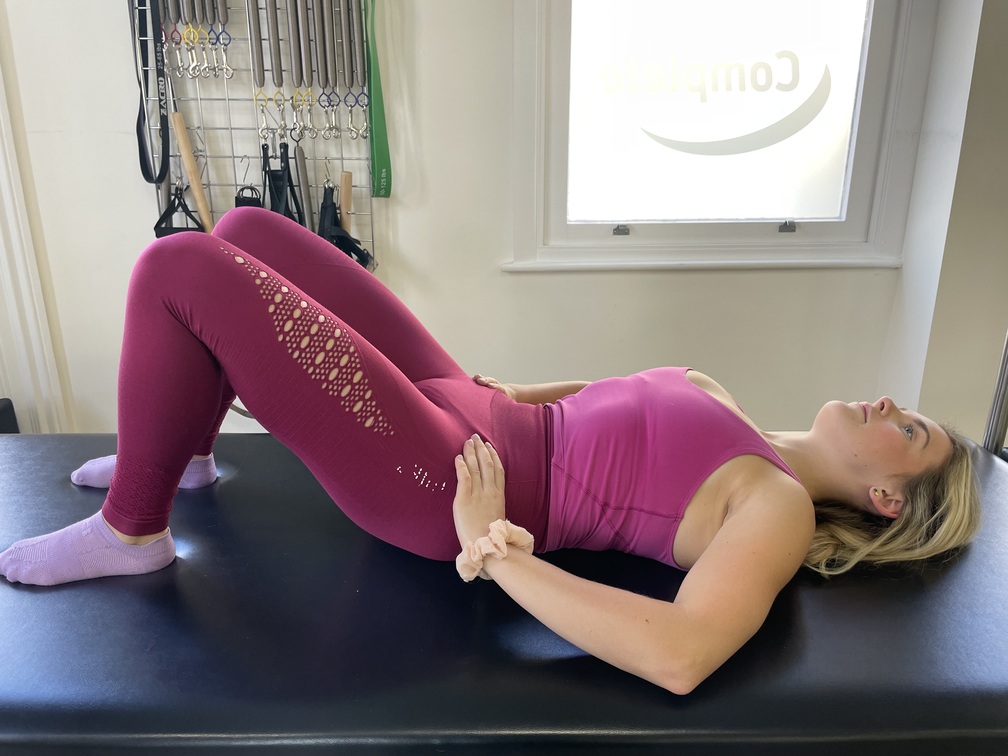
Next: Tilt your pelvis the other way so that the 6 o’clock is now nearer the mat and the 12 o’clock is higher. This should create a bigger curve in your lower back.
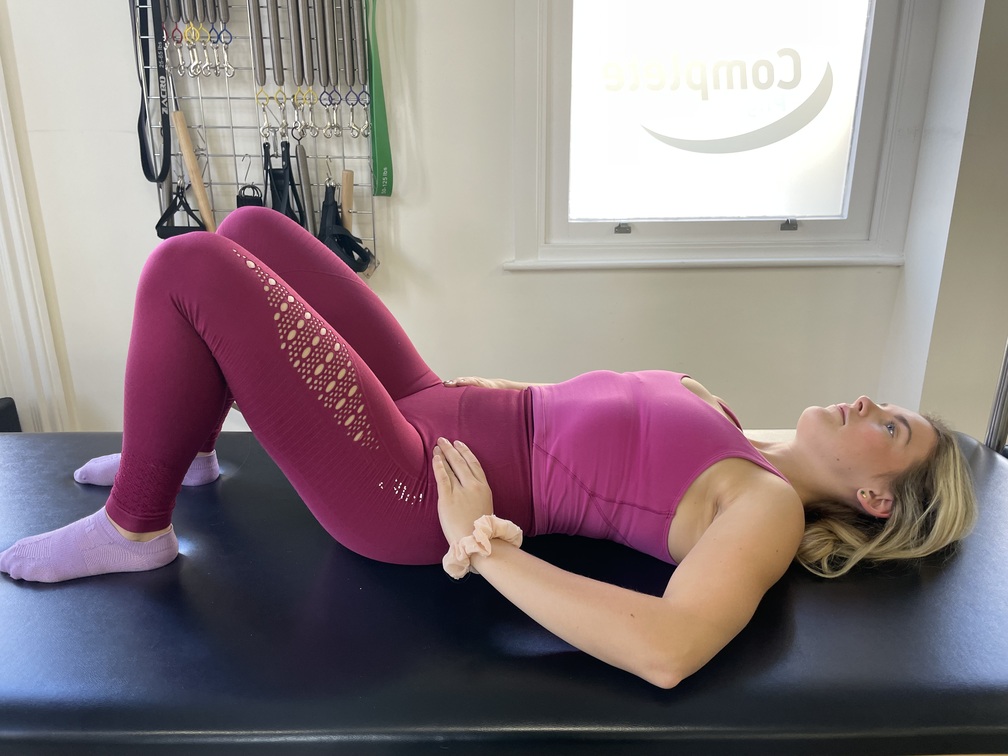
Repeat: Perform this rocking motion several times.
The take away:
Practise these exercises regularly and you should be able to find and maintain a neutral alignment – something your spine will thank you for.
Variations:
A variation of this exercise is to tilt the pelvis side to side, rather than up and down. To achieve this, seesaw the pelvis between 3’clock and 9 o’clock. Again, use your hands as a guide to feel how your pelvis is moving.
Your legs may respond more during this variation than the other. Allow them to move forwards and backwards in parallel to one another (but not sway side to side) as your pelvis moves.
Using Props for Neutral Spine Alignment
A partially-deflated Pilates over ball placed behind the pelvis can make this exercise easier.
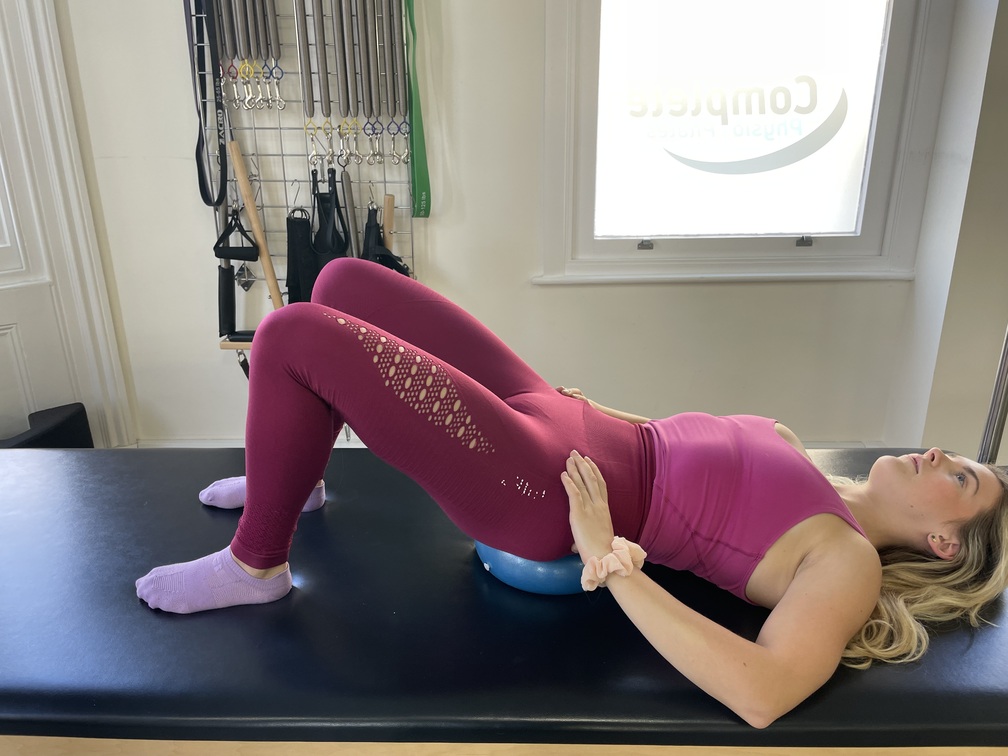
Things to watch for
Instead of a clock, imagine there is a bowl of water there. When the pelvis is still and in neutral, the water is flat and calm. When you’re tilting back and forth and side to side, the water will start to move – but not too much! Avoid exaggerated movements to keep the water in the bowl.
Thinking about what is happening at the back of your pelvis as well as at the front can be helpful. Using the bowl image again, imagine the rounded shape of the bowl matching up with the back of your pelvis. So, when you move between the clock number you are also rocking smoothly back and forth on a curved surface.
Things to watch for
This is a movement that should be isolated to the pelvis. Check you’re not moving excessively in your middle spine or legs as you perform this exercise. Also try to keep your shoulders and neck relaxed throughout.

Your neutral spine
Your neutral spine alignment
Your neutral spine is somewhere between the two extremes you move through in this exercise. It is neither tucked under nor overextended.
In your neutral position, your lower belly should be flat – you can feel this with your hands – and there should be a curve in your lower spine. For most people, this curve will be only a small gap between their back and the mat – just enough for a breath of air to pass under their lower back.
Reinforce it through exercises
To maintain your neutral spine, bring awareness to it when seated, standing, at the gym and the Pilates studio.
As a first step, practise these simple dead bug and femur arc exercises at home.
From lying supine, slowly bring one leg up to table top and then drop it back to the mat. Now swap legs. Keep the pelvis still throughout by connecting to your deep stabiliser muscles and allowing your legs to move smoothly in your hip sockets. Keep your weight in the middle of that bowl at the back of your pelvis.
Take this exercise to the next level by bringing both legs up to table top. From here, allow one leg to drop down to the mat then bring it back. Alternate legs.
The big challenge here is to keep your spine in neutral and avoid arching your back as you drop your feet towards the mat. If it does arch it means you’ve lost the connection to those deep stabilisers and your neutral spine.
The solution to this is to reduce your range of movement. Only allow the leg to drop part of the way towards the mat before you bring it back to the starting position. Syncing your movement with your breath by exhaling as you lower each leg can also be helpful.
Conclusion
Finding your neutral spine is all about finding your natural spine and using that position during exercise and loading, to help build functional strength that works for you and your body. Your spine is the centre axis of your body and whether you’re lying down, seated or standing, it has a huge role to play in helping us move throughout the world. Learning about our neutral spine also helps us reduce load or forces through our spine that could potentially lead to symptoms such as pain or reduced mobility.
Find your neutral spine at Complete Pilates
Join us for Pilates in Angel, Pilates in Chelsea and Pilates in London City to find out more about your spine alignment and how to improve your posture.
Education is key:
These blogs are designed to give information to everyone, however, it is important to remember that everyone is different! If you have not seen one of our therapists and have any questions about injuries, what you have read or whether this may be useful to you, please just ask. We are more than happy to help anyone and point you in the right direction. Our biggest belief is that education is key. The more you understand about your injury, illness and movement, the more you are likely to improve.


